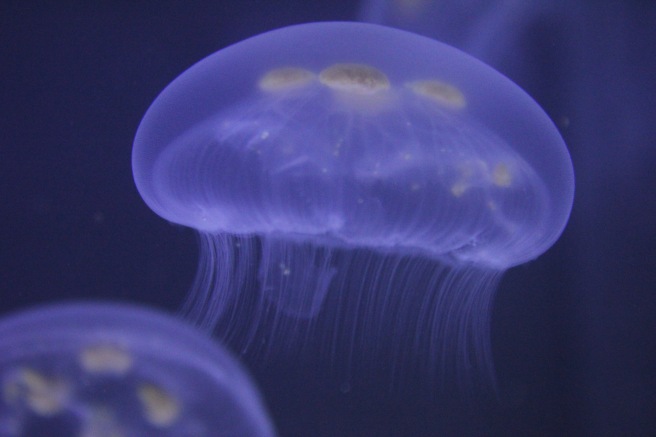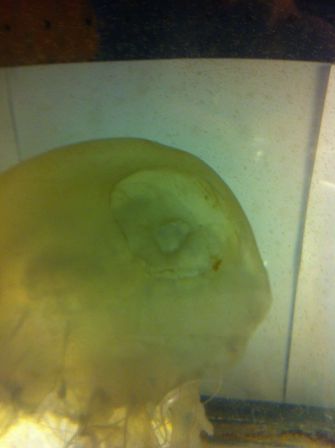Jellyfish are strange and very foreign creatures. They’re often compared to alien spacecraft, and deservingly so. Unfortunately, these enigmatic creatures don’t have brains or mouths to tell us when they’re upset. As jellyfish guardians, we have to be able to tell the difference between a healthy jellyfish and a sick one.
For this post, we’re going to be using the Moon Jellyfish for all of our examples. Other species may vary slightly, but should be very similar.
What does a healthy jellyfish look like?
A healthy jellyfish should have an even, round bell. Their bodies should be fairly thick, and smooth. A happy moon Jellyfish will have hundreds of tiny fringe tentacles at the edge of the bell, and four mouth arms in the center. It should pulse once every few seconds.

In the above photo, notice how there are tons of long, hair like tentacles at the edge of the bell. These “fringe tentacles” are a good indicator of health. They should be long, relaxed and flow smoothly as the jellyfish pulses. They do tend to retract these while eating, so don’t be alarmed if they temporarily disappear!
Also notice the width of the bell. This is exactly how wide a healthy Moon Jelly should be. Thinner ones are less nourished, and may not be getting enough nutrition. 
Note that the bells are round and very smooth. The jellies maintain a sort of half circle form. They aren’t thin like plates, but also aren’t balled up into a sphere. Both extremes are bad signs.
We hope this post can be used as a reference guide for your own jellies at home. Stay tuned, as our next post will be on common jellyfish ills and ails.
At the Jellyfish warehouse, we put the highest level of effort and research to create happy and healthy jellyfish for the home aquarium. You can purchase your own here: Jellyfish Warehouse


